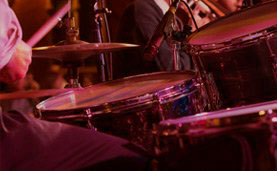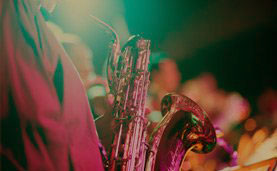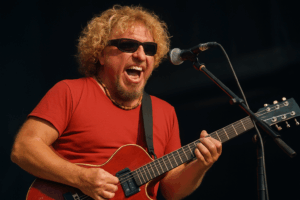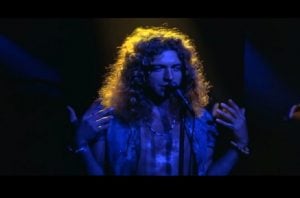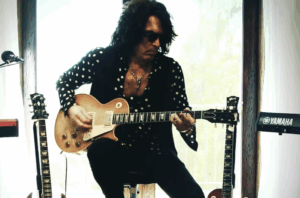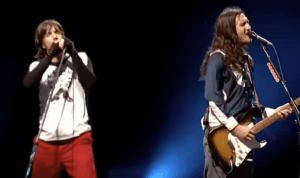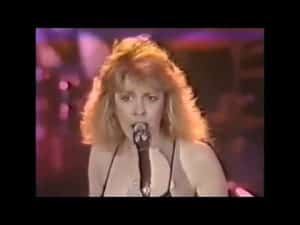The Greatest Rock Lyricists Of The ’60s

via @Swingin’ Pig / YouTube
The 1960s was a decade of lyrical innovation, where songwriters transformed rock music into a storytelling medium that resonated across generations. From surreal poetry to biting social commentary, the best lyricists of the era pushed boundaries, crafting words that carried as much weight as the music itself. Their songs captured the spirit of the time—sometimes rebellious, sometimes introspective, but always unforgettable.
This list highlights the greatest rock lyricists of the ’60s, chosen for their ability to craft songs that stood the test of time. Whether through vivid imagery, raw emotion, or bold experimentation, these artists elevated songwriting into an art form. Each had a distinct voice, shaping not just the music of their era but the evolution of rock as a whole.
While some wrote anthems that defined a movement, others created deeply personal compositions that connected on an individual level. The impact of these lyricists didn’t stop at their own recordings—many of their words influenced generations of musicians that followed. Here are the artists who set the gold standard for rock lyricism in the 1960s.
1. Syd Barrett
Syd Barrett, the enigmatic founder of Pink Floyd, was known for his whimsical and surreal songwriting. His lyrics often blended childlike wonder with eerie, otherworldly themes. Songs like “Arnold Layne” (1967) and “See Emily Play” (1967) showcased his ability to weave peculiar narratives with haunting melodies.
His work on “Astronomy Domine” (1967) took psychedelic music into the cosmos, with lyrics that painted vivid imagery of space travel and celestial bodies. Meanwhile, “Lucifer Sam” (1967) was a quirky yet mysterious song, rumored to be about Barrett’s cat but filled with spy-novel intrigue. “Octopus” (1969), from his solo work, further demonstrated his knack for blending nonsense lyrics with a strangely compelling sense of meaning.
Despite his brief tenure with Pink Floyd, Barrett’s influence on rock lyricism was profound. His unique storytelling, coupled with his experimental approach to music, left a lasting imprint on the psychedelic rock genre. His early departure from the band only added to his mystique, making his songwriting all the more legendary.
2. John Lennon and Paul McCartney
John Lennon and Paul McCartney’s songwriting partnership defined the sound of the ’60s. Their collaborative efforts, especially in the early years, resulted in some of the decade’s most memorable lyrics. Songs like “I Saw Her Standing There” (1963) and “She Loves You” (1963) captured the youthful exuberance of Beatlemania.
As their songwriting matured, they ventured into more introspective and experimental territory. “A Day in the Life” (1967) blended Lennon’s abstract, observational lyricism with McCartney’s straightforward storytelling, creating a masterpiece of contrast and depth. Songs like “Eight Days a Week” (1964) and “I Want to Hold Your Hand” (1963) showcased their ability to craft infectious melodies with simple yet heartfelt lyrics.
Though their later years saw them writing more individually, the Lennon-McCartney partnership remains one of the most successful songwriting duos in history. Their ability to combine poetic storytelling, emotional depth, and melodic brilliance ensured their place as legendary lyricists.
3. Bob Dylan
Bob Dylan revolutionized songwriting by infusing folk music with poetic and politically charged lyrics. Songs like “Blowin’ in the Wind” (1963) and “The Times They Are A-Changin’” (1964) became anthems for social change, resonating with audiences far beyond the folk music scene.
His ability to weave intricate narratives was evident in “A Hard Rain’s A-Gonna Fall” (1963) and “Masters of War” (1963), which painted haunting portraits of war, injustice, and a world on the brink of collapse. Meanwhile, songs like “Don’t Think Twice, It’s Alright” (1963) and “Boots of Spanish Leather” (1964) showcased his gift for crafting deeply personal and poetic reflections on love and loss.
Dylan’s lyrical prowess extended into the mid-’60s as he ventured into surreal and stream-of-consciousness writing. “Subterranean Homesick Blues” (1965) marked a shift toward rock, blending rapid-fire lyrics with biting social commentary. His influence on rock lyricism remains unmatched, as he pushed the boundaries of what song lyrics could achieve.
4. Jimi Hendrix
Jimi Hendrix was as much a poet as he was a guitar virtuoso. His lyrics, often dreamlike and evocative, painted vivid sonic landscapes. “Purple Haze” (1967) introduced his signature style—cryptic, psychedelic, and endlessly intriguing.
His introspective side shone through in “The Wind Cries Mary” (1967) and “Castles Made of Sand” (1967), both of which revealed a more vulnerable, reflective Hendrix. “Little Wing” (1967), though brief, is one of his most poetic works, capturing a mystical, almost spiritual vision of love.
With “Voodoo Chile” (1968) and “Electric Ladyland” (1968), Hendrix fused blues and psychedelia with lyrical storytelling that felt mythic in scope. His ability to pair raw emotion with vivid imagery cemented him as one of the most innovative lyricists of the decade.
5. Lou Reed
Lou Reed’s songwriting was stark, unfiltered, and brutally honest. His work with The Velvet Underground captured the raw realities of city life, addiction, and human vulnerability. “I’m Waiting for the Man” (1967) and “Heroin” (1967) offered stark portrayals of drug use without glorification or condemnation.
His poetic minimalism was evident in songs like “Venus in Furs” (1967) and “All Tomorrow’s Parties” (1967), which delved into themes of decadence and alienation. Meanwhile, “Pale Blue Eyes” (1969) showed his softer, more introspective side, a heartfelt ballad of lost love.
Reed’s lyrics were groundbreaking for their realism and literary depth. Whether documenting the grittier side of New York life or exploring existential themes, he brought an unparalleled sense of storytelling to rock music.
6. Neil Young
Neil Young’s lyrics often blended personal introspection with broader social themes. His early work with Buffalo Springfield included “Mr. Soul” (1967) and “Expecting to Fly” (1967), which showcased his poetic approach to songwriting.
In his solo career, songs like “The Loner” (1969) and “Down by the River” (1969) cemented his reputation for crafting brooding, emotionally rich lyrics. “Cowgirl in the Sand” (1969) and “Cinnamon Girl” (1969) balanced poetic ambiguity with raw, unfiltered passion.
Young’s ability to capture melancholy, nostalgia, and longing in his lyrics made him one of the most distinctive voices of his time. His songwriting not only shaped folk-rock but also paved the way for the singer-songwriter movement of the ’70s.


